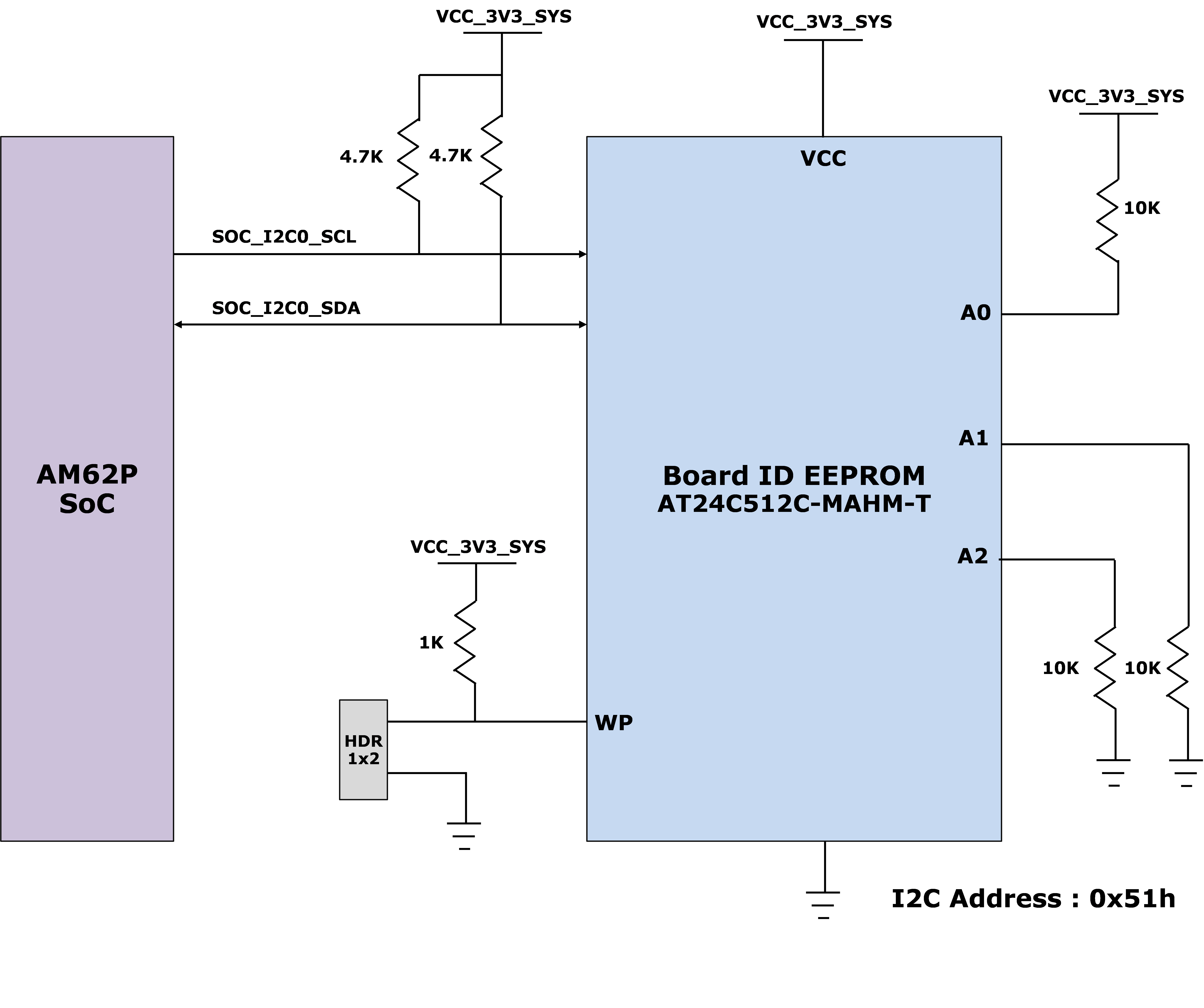SPRUJA2 November 2023
- 1
- Description
- Get Started
- Features
- 5
- 1Evaluation Module Overview
-
2Hardware
- 2.1 Additional Images
- 2.2 Key Features
- 2.3 Interface Mapping
- 2.4 Power ON/OFF Procedure
- 2.5 Clocking
- 2.6 Reset
- 2.7 CSI Interface
- 2.8 OLDI Interface
- 2.9 DSI Interface
- 2.10 Audio Codec Interface
- 2.11 HDMI Display Interface
- 2.12 JTAG Interface
- 2.13 Test Automation Header
- 2.14 UART Interface
- 2.15 USB Interface
- 2.16 Memory Interfaces
- 2.17 Ethernet Interface
- 2.18 GPIO Port Expander
- 2.19 GPIO Mapping
- 2.20 Power
- 2.21 EVM User Setup/Configuration
- 2.22 Expansion Headers
- 2.23 Interrupt
- 2.24 I2C Address Mapping
- 3Hardware Design Files
- 4Compliance Information
- 5Additional Information
2.16.4 Board ID EEPROM
AM62P SK- EVM can be identified remotely from the version and serial number data stored on the onboard EEPROM.
Board ID memory AT24C512C-MAHM-T from Microchip is interfaced to the I2C0 port of the SOC and is configured to respond to address 0x51 programmed with the header description. I2C address of the EEPROM can be modified by driving the A0 pin to high and A1, A2 pins to LOW. The first 259 bytes of memory are preprogrammed with identification information for each board. The remaining 65277 bytes are available to the user for data or code storage.
Note: Header J3 must be shorted with a
jumper to perform a write operation.
 Figure 2-22 Board ID EEPROM
Interface
Figure 2-22 Board ID EEPROM
Interface